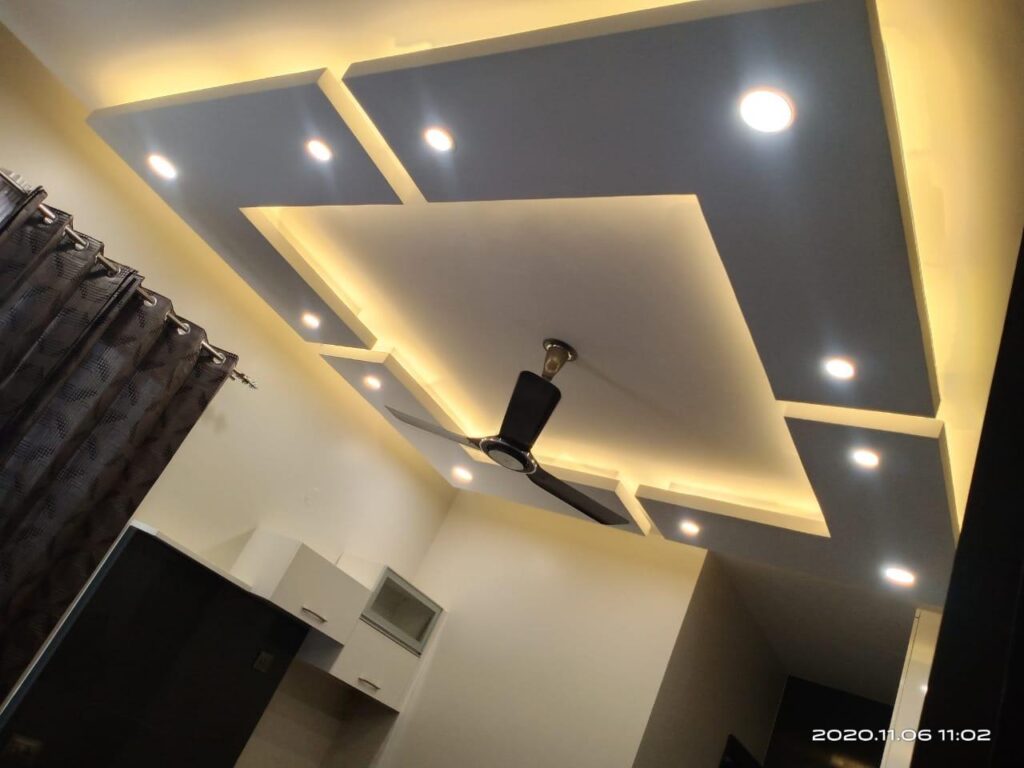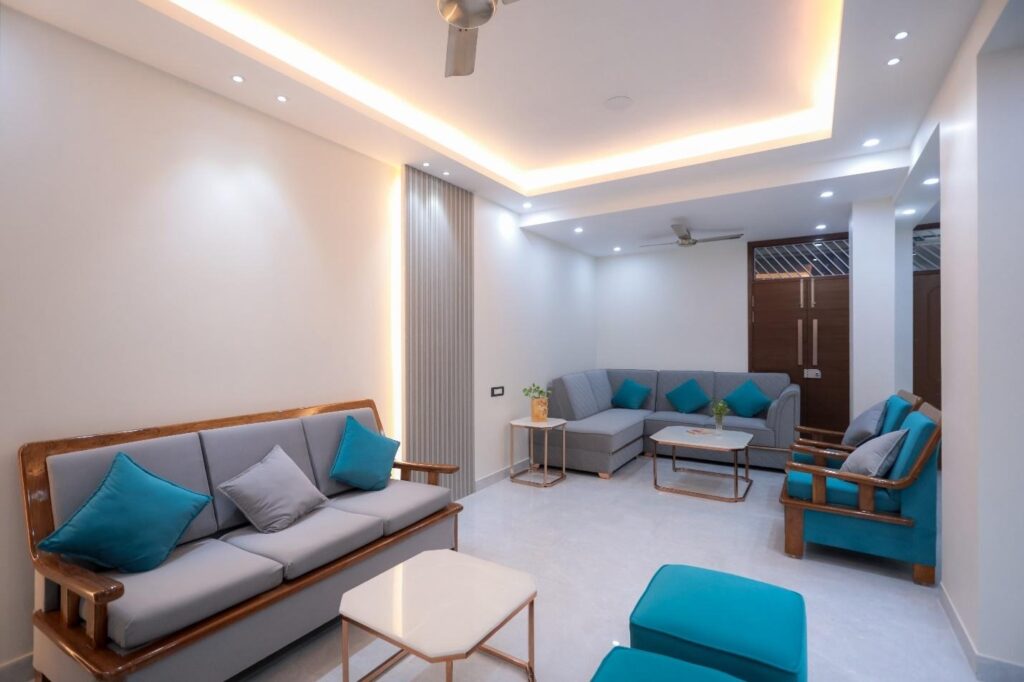Know All About False Ceilings
You are the proud owner of a loving home filled with artistic furniture, interesting wall designs, and attractive flooring patterns. What about the ceiling? Is it embellished like the rest of your home or plain and bare? Why should the ceiling be abandoned? It’s time to add a touch of flair to the ceiling as well.
Plain and simple ceilings are becoming passe now. More and more of our customers prefer false ceilings in their homes and offices. All these years, as designers we have spent our energies and creativity on making homes beautiful. Now, we are paying attention to the ceilings too.
In this article, we will tell you everything you need to know about the false ceiling.
What is a False Ceiling?

A false ceiling is a mock roofing structure or secondary ceiling that is constructed below the original ceiling. It is a fixed grid of metal and is hung from the original ceiling using metal or wooden frames. It is not a load-bearing wall and is mainly included for beautification purposes.
It is also referred to as dropped ceiling or suspended ceiling.
Advantages of a False Ceiling

- It helps in enhancing aesthetics.
- In a room with elevated ceilings, a false ceiling creates an illusion of a lower ceiling, making the furniture appear larger.
- Can be used to conceal ducts, pipes, and other structural elements from view.
- It provides good insulation and thus neutralises room temperature.
- It also helps in reducing electricity bills.
- The wood and fibre used in the construction of false ceilings absorb sound waves, thus reducing echoes and enhancing acoustics This feature is of great help in the living room, gaming areas, recording room, etc.
- It also acts as a duct for all wiring systems.
- The panels used in a false ceiling are easily removable. This ensures ease of maintenance work. Any kind of repair, modification, or replacement of wires or pipes is easily possible.
- It’s an inexpensive method of covering the ceiling.
Disadvantages of a False Ceiling

- Needs regular maintenance.
- If the apt material is not used, it might not last long.
- It makes the room appear shorter thereby reducing the room area.
- Since it is made of lightweight material, it is susceptible to earthquakes and can collapse.
- Installation requires skilled manpower.
Types of False Ceilings
False ceilings can be categorised depending on the material used, appearance, and visibility.

The most commonly used False Ceilings are-
- POP False Ceilings
Plaster of Paris paste is applied on the wooden board and fibre board. This kind of false ceiling is long-lasting, lightweight, durable, and provides good insulation. It is attractive and does not crack after setting. However, it cannot be used in areas that have higher moisture content.
- PVC False Ceilings
Polyvinyl Chloride is one of the most commonly used materials for false ceilings. It is lightweight, strong, water-resistant, termite-proof, and flexible. It is suitable for all kinds of climates. Cost-wise, it is much cheaper than other alternatives. However, if good quality PVC is not used, it might appear like cheap plastic and the joints might be visible too. Since it is made of plastic, it is not resistant to high temperatures.
- Gypsum Board False Ceilings
Set gypsum and specially manufactured paper are bonded together to form the gypsum board false ceiling. It is high in quality and strength. It is installed without using too many metal fixtures; hence it has a seamless appearance. It is easy to clean and maintain. While installation is an easy process, replacement is quite cumbersome. Like the POP ceiling, it can also not be used in moist areas like bathrooms, toilets, etc.
- Metal False Ceilings
Steel, aluminium, or galvanized iron is used in making metal false ceilings. They come in the form of prefabricated panels, planks, or tiles and thus are easy to install. Fire resistance, durability, and low maintenance cost are a few of their other advantages. Unfortunately, they are costly and require special treatment to protect them against corrosion.
- Wooden False Ceilings

Hollow brick boards and panels are a good choice for the false ceiling as they can be used in combination with other materials. It is available in a variety of colours and designs. Installing wooden panels does not require much time and effort. If good quality wood is used, the false ceiling would last for many years.
But they are not free of disadvantages either. Wood is a natural material, hence is susceptible to termite attacks. They are pricier than other materials. Also, their appearance can change over time.
- Glass False Ceilings
Glass false ceilings provide high aesthetic value. They make the space appear larger and are most often used in commercial spaces. Glass is flexible, versatile, and a good insulator. But it requires regular cleaning and maintenance. Installation is cumbersome as glass should be handled with extreme care. These are preferred in commercial establishments or retail spaces.
- Fibre False Ceilings
A blend of synthetic and natural materials is used to construct Fibre False Ceilings. Since it is a blend, it has the properties of all its constituent materials. It is fire-resistant and has high strength and good insulation properties. It is easy to install and maintain too. However, it is not advisable to use it for residential purposes.
- Fabric False Ceilings
Cloth and leather are used for the construction of Fabric False Ceilings. It is affordable, aesthetically appealing, and easy to install. However, being porous materials, they tend to absorb a lot of dust. This kind of false ceiling is also not recommended for residences.
False ceilings are gaining popularity these days. To make them long-lasting, you must ensure the following –
- Select the material best suited for the climatic conditions of your area.
- Proper installation.
- Regular maintenance.
(All the images used in this article are the property of Inspaces and are protected by copyright laws. Using them without permission is a criminal offense.)
